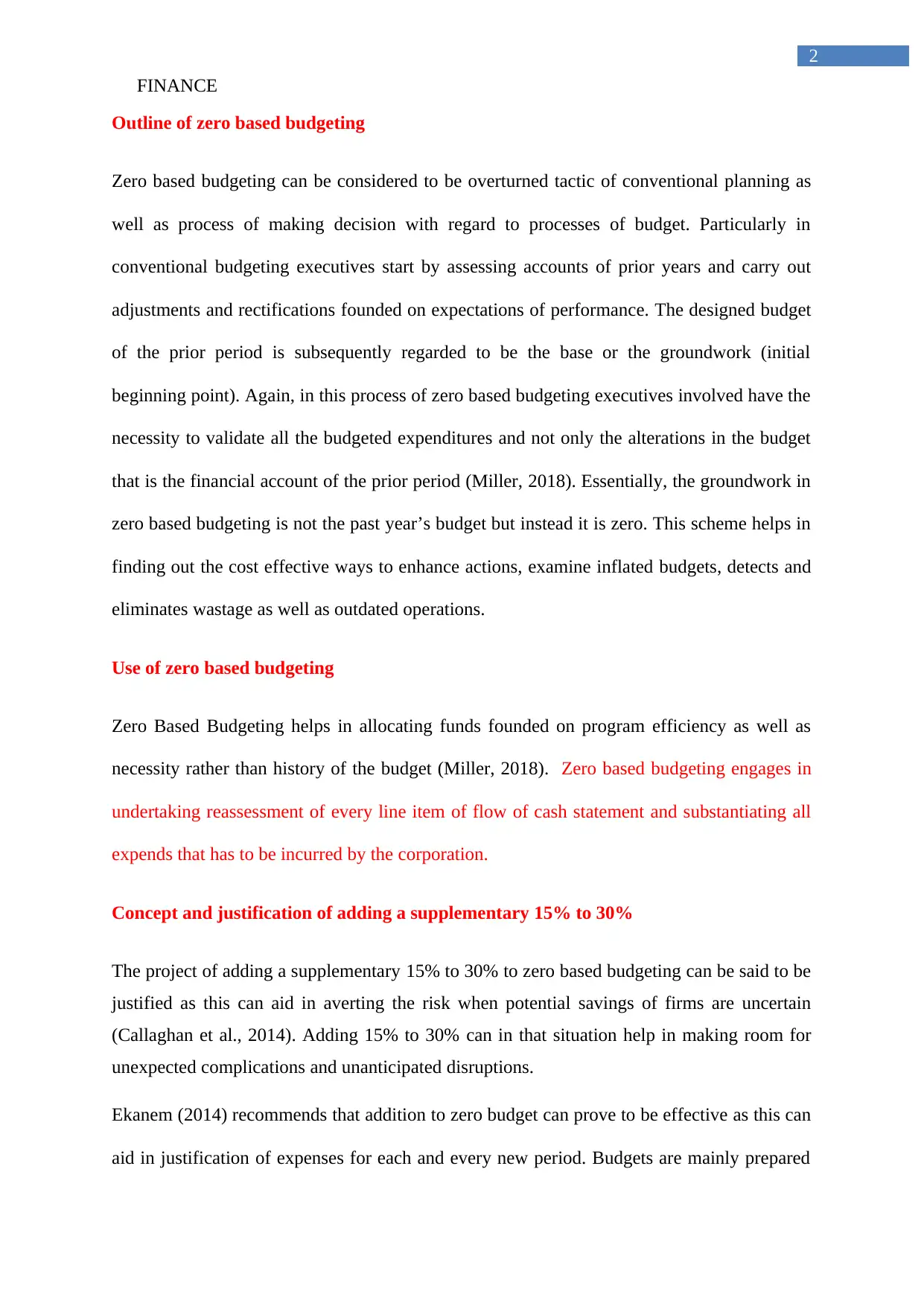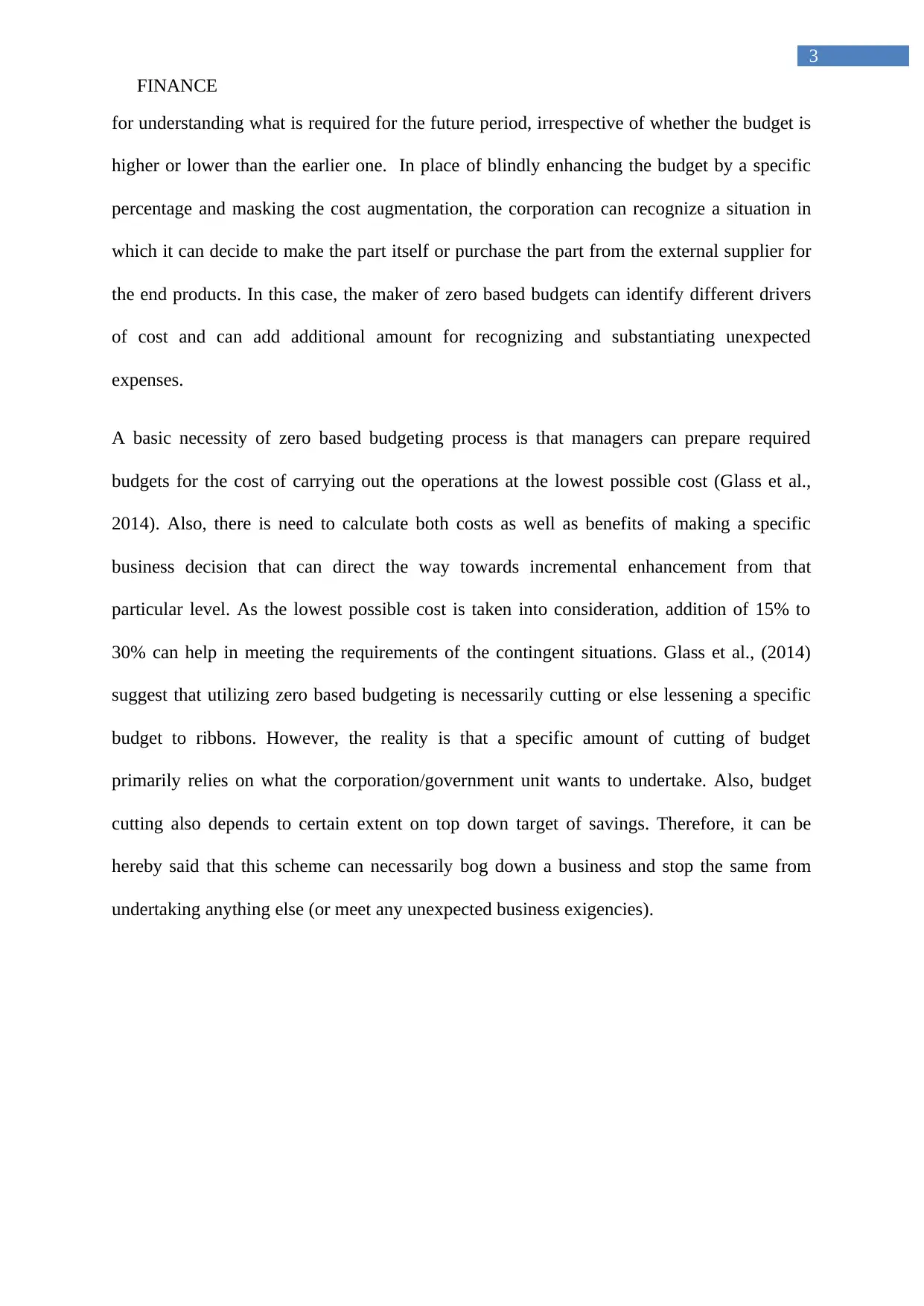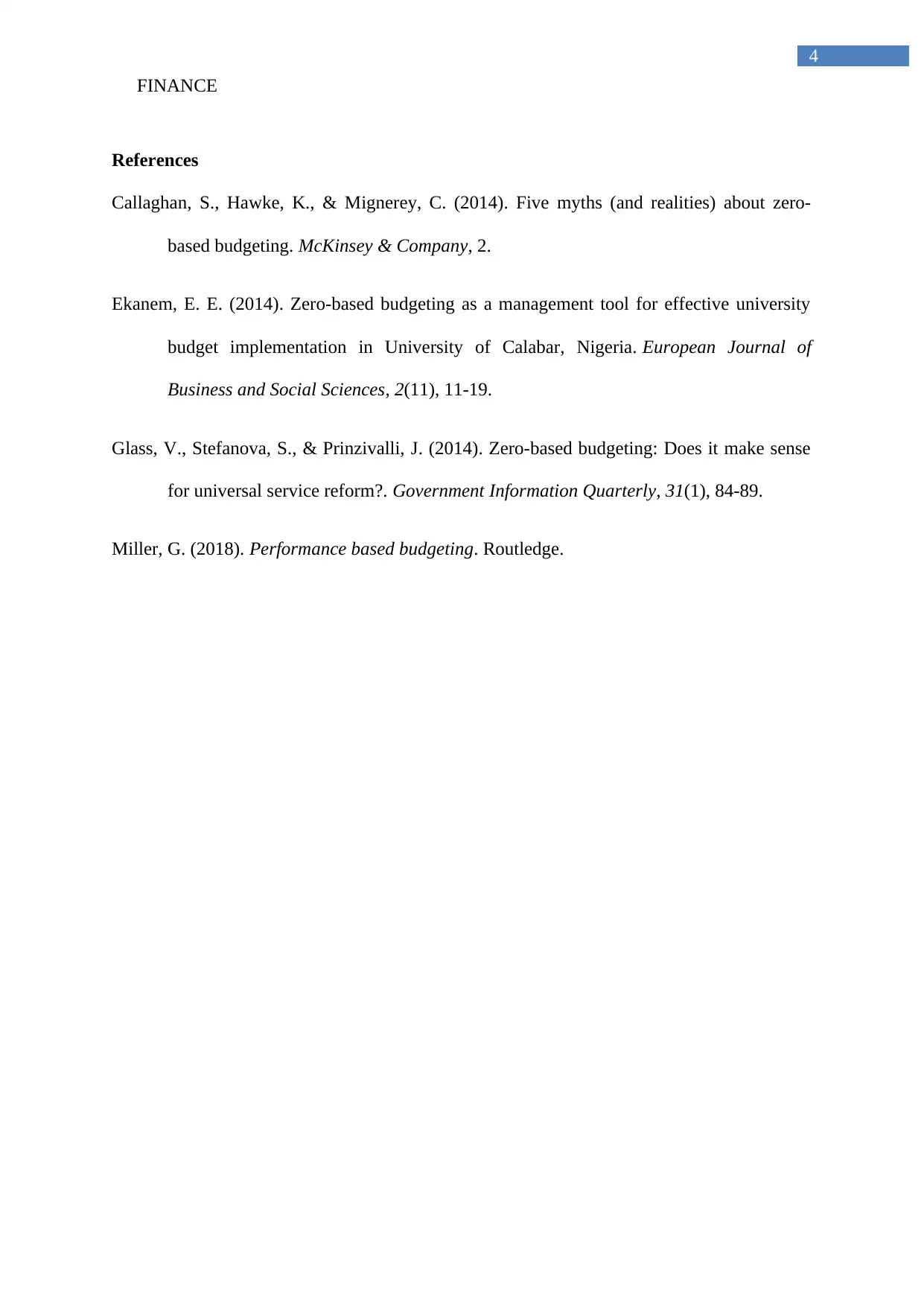Finance Report: Zero Based Budgeting, Justification of 15-30% Addition
VerifiedAdded on 2021/04/17
|4
|778
|31
Report
AI Summary
This finance report delves into the concept of zero based budgeting (ZBB), contrasting it with conventional budgeting methods. It outlines the ZBB process, emphasizing the importance of validating all budgeted expenditures from a zero base, rather than relying on the previous year's budget. The report highlights the benefits of ZBB, such as identifying cost-effective actions and eliminating waste. Furthermore, it explores the justification for adding a supplementary 15% to 30% to ZBB, arguing that this addition can mitigate risks associated with uncertain savings and accommodate unexpected complications. The report references several academic sources to support its arguments and provides a comprehensive overview of ZBB, making a case for its practical application in financial planning and decision-making.
1 out of 4





![[object Object]](/_next/static/media/star-bottom.7253800d.svg)